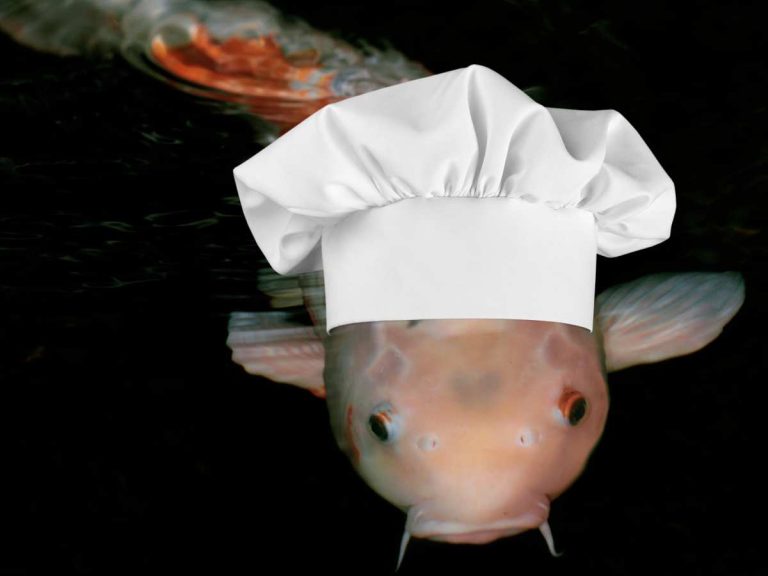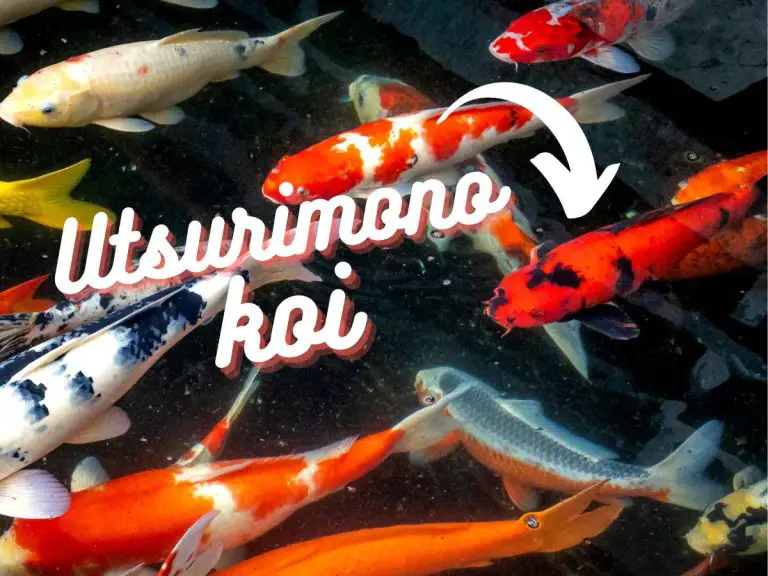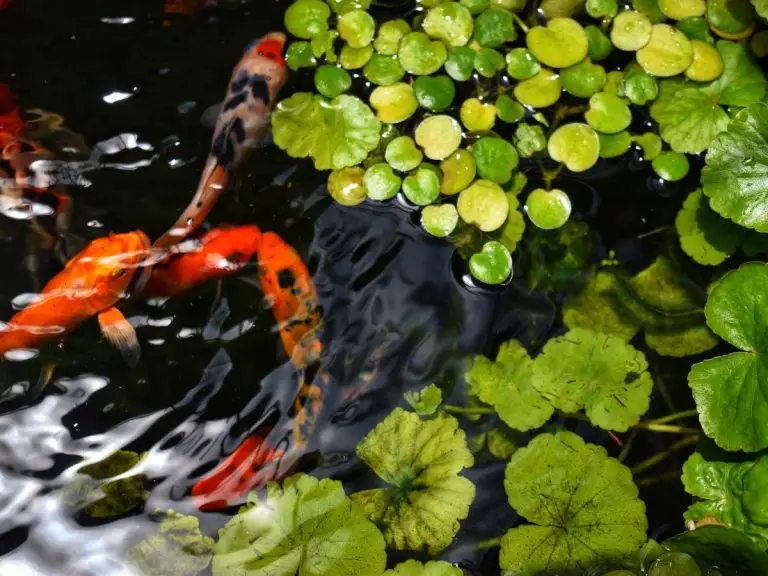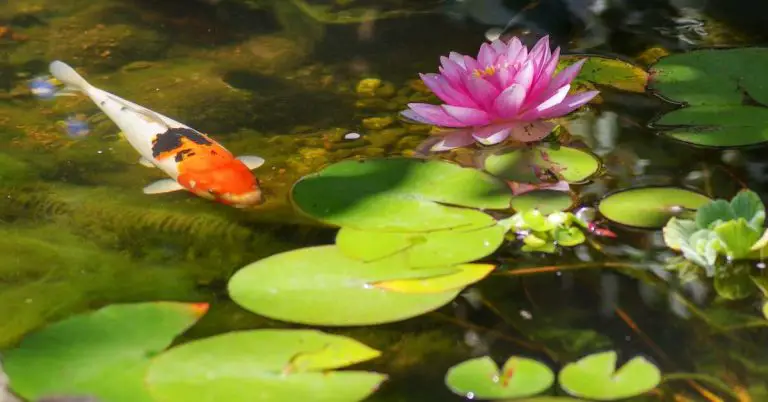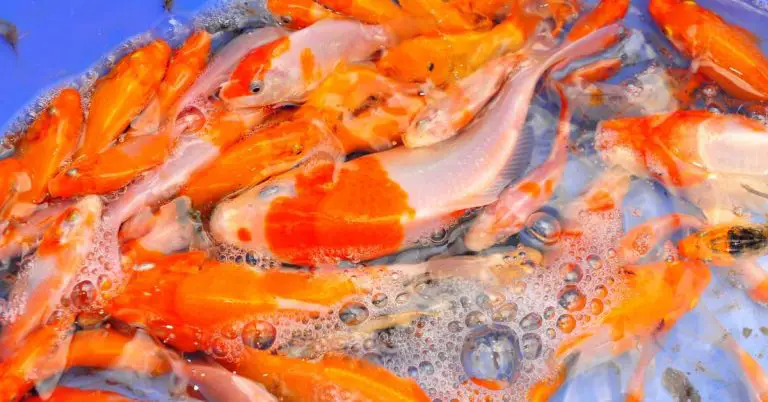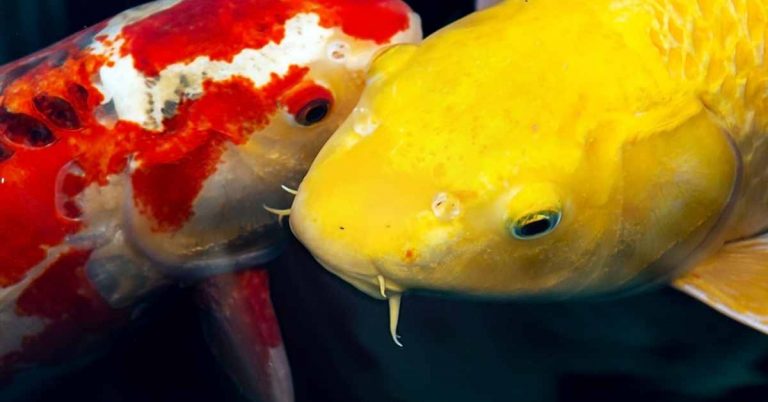Shusui Koi Guide: A Complete Guide to Characteristics, Care, Breeding, and More
Are you curious about shusui koi, a beautiful variety of koi fish? Well, you’re in the right place!
Shusui koi fish are known for their stunning color patterns and unique scale types. With variations in both color and scale, these fish truly stand out among other koi varieties. They have a distinct body shape and size, which we’ll compare to other koi types below.
In this article, we’ll dive into the world of shusui koi and explore their characteristics, care requirements, breeding tips, and even their fascinating history. We’ll also provide essential care instructions for keeping shusui koi happy and healthy. Plus, we’ll share details about their lifespan and growth rate, so you know exactly what to expect.
Whether you’re a seasoned koi enthusiast or just starting your journey, this guide has got you covered!

Characteristics of Shusui Koi
Shusui Koi are a captivating variety of koi fish, renowned for their distinctive blue hue. Originating from a crossbreed between the Asagi Koi and the German-scaled carp, Doitsugoi, in the early 1900s, Shusui have become a favorite among koi enthusiasts.
So when it comes to the unique characteristics of Shusui Koi, there is plenty to discuss. Let’s dive in and explore their physical appearance, body shape, size, and their lifespan and growth rate.
Physical appearance
The colorful and patterned scales of the Shusui Koi make them a truly stunning breed. These fish can have a variety of color combinations, including vibrant hues of blue, white, and red. Some may even sport black markings that add an extra touch of beauty to the mix.
Shusui Koi also have distinct scale types called “hi” and “shushi.” The hi scales are red and can be found along the fish’s lateral line, while the shushi scales are the blue or gray scales found on the back and sides. This unique combination of scales creates a visually striking appearance that sets them apart from other koi varieties.
Distinctive Features: Unlike their Asagi counterparts, Shusui are not fully scaled. They possess a unique scale pattern, with large scales lining the dorsal (top) part of their body and along their lateral line. This gives them a striking appearance, with their light blue skin prominently displayed, earning them the nickname ‘blue-backs’.
Hi Accents: The hi on a Shusui is generally more vibrant and redder than that on an Asagi. It’s typically visible on the cheeks, sides, and fin joints. The presence of tight hi markings at the fin joint, especially the pectoral fins, is highly desirable. Some Shusui also exhibit hi patterns on their dorsal and tail joints.
Body shape and size
Shusui Koi have an elongated and slender body shape, similar to other Koi varieties such as Kohaku and Sanke. However, they generally have a more streamlined appearance. As they grow, their bodies can reach a length of around 18-24 inches.
A Shusui’s head should ideally be a clear, uniform color, ranging from white to a slight blue shade. It’s not uncommon for some Shusui to have hi (red) patterns on their head or face. The contrast between their dark scales and the light-colored skin is both attractive and dramatic. When observing a Shusui, symmetry in the placement of their doitsu (German) scales is a key indicator of quality.
In terms of body size, Shusui Koi may be a bit smaller compared to other popular koi varieties. Their smaller size can make them a great choice for pond owners who have limited space but still want to enjoy the beauty of these fish.
Lifespan and growth rate
| Koi Variety | Average Lifespan | Average Growth Rate |
|---|---|---|
| Shusui Koi | 25-35 years | 3-6 inches per year |
| Kohaku Koi | 25-35 years | 3-6 inches per year |
| Sanke Koi | 25-35 years | 3-6 inches per year |
On average, Shusui Koi can live between 25 to 35 years, making them a long-term investment for any pond enthusiast. In terms of growth rate, these fish tend to grow at a steady pace, increasing in size by around 3 to 6 inches per year.
So, whether it’s their vibrant scales, sleek body shape, or their potential for longevity, Shusui Koi truly stand out among fish enthusiasts. But there’s more to discover about these fascinating creatures, so let’s keep swimming forward!
What is the difference between Asagi and Shusui koi?
When exploring the enchanting realm of koi, the blue varieties of Asagi and Shusui often captivate enthusiasts. Both possess a mesmerizing blue hue, yet they are distinct in their characteristics and origins.
Asagi Koi trace their lineage back to the ancestral Magoi, having been developed around 200 years ago, representing a more traditional and ancient lineage of koi. In contrast, Shusui Koi emerged in the early 1900s, resulting from a crossbreeding endeavor between Asagi and Doitsugoi, a German-scaled carp.
The scale pattern is a defining difference between the two. Asagi are fully scaled koi, their scales characterized by blue centers with a light blue-to-white rim. This creates a net-like pattern over their entire body, known as reticulation. On the other hand, Shusui are not fully scaled. They exhibit prominent scales only on their dorsal line and along the lateral line, revealing a light blue skin on their back, which has earned them the nickname ‘blue-backs’.
In terms of coloration and hi accents, Asagi predominantly showcase a blue shade complemented by hi (red) accents, which generally appear more orange than red. These accents are visible on the cheeks, sides of the body, and fin joints, with the head ideally presenting a uniform color, ranging from white to a subtle blue. Shusui, while also blue with hi accents, tend to exhibit a more vibrant red hi. This hi is present on the cheeks, sides, and fin joints and can occasionally grace the head.
While both varieties share a blue lineage, their unique scale patterns, origins, and color accents set them apart. An Asagi, with its intricate scalation and balanced hi accents, might be perceived as less flashy compared to other koi varieties but remains a classic choice. In contrast, the Shusui, with its dramatic scale contrast and distinct pattern, stands out as a modern marvel in koi collections.
Care Requirements for Shusui Koi
When it comes to setting up a tank or pond for your shusui koi, there are a few things to consider. First and foremost, you need to make sure the water temperature is ideal for their needs. Shusui koi prefer water temperatures between 65 and 75 degrees Fahrenheit. Additionally, it’s important to maintain good water quality. Regularly test the water pH, ammonia, and nitrate levels to ensure a healthy environment for your fish.
When it comes to the size and depth of your pond or tank, shusui koi require ample space to swim and grow. A general rule of thumb is to have at least 500 gallons of water per adult shusui koi. The depth of the water should be at least 3 feet to provide enough swimming and hiding space for the fish.
Feeding and Nutrition
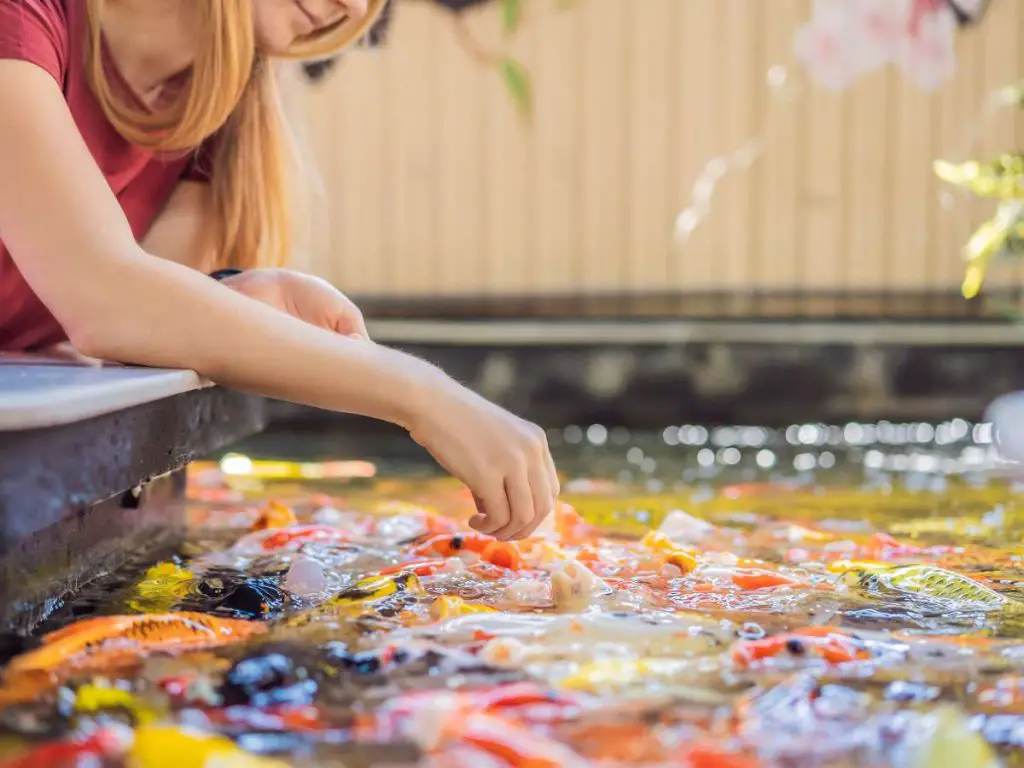
Feeding your shusui koi the right diet is crucial for their health and growth. Some people even like to make their own koi food.
A high-quality koi pellet is a great staple food for shusui koi. Look for pellets that contain a balanced mix of protein, fats, and carbohydrates. It’s important to feed them the right amount and avoid overfeeding, as excess food can pollute the water.
As an occasional treat, you can supplement their diet with live or frozen foods such as brine shrimp, daphnia, or bloodworms. These foods provide extra nutrients and variety in their diet, keeping them happy and healthy.
Maintenance and Health Considerations
Proper filtration and aeration are essential for maintaining a healthy pond or tank for your shusui koi. Invest in a good filtration system that can effectively remove impurities from the water. Additionally, ensure proper aeration to keep the water oxygenated for your fish.
Common diseases that may affect shusui koi include bacterial or fungal infections, parasites, and swim bladder issues. To prevent these problems, it’s important to regularly check the water parameters and perform regular water changes. Handle your koi with care during maintenance activities to avoid stressing them out.
Regular check-ups with a qualified veterinarian who specializes in fish health are also important. They can provide professional guidance on any health concerns and offer advice on proper care for your shusui koi.
Breeding Shusui Koi
When it comes to breeding shusui koi, there are several important factors to consider. Breeding season and readiness indicators play a crucial role in determining the ideal time to begin the breeding process. It is essential to observe the behavior and physical condition of the koi to ensure they are ready for breeding.
Selecting the right breeding pairs is another crucial step in successful shusui koi breeding. Look for koi that exhibit desirable traits such as a vibrant color and strong body structure. It is also important to choose koi that are genetically compatible to increase the chances of producing high-quality offspring.
The actual spawning process requires careful observation and intervention. Koi should be placed in a dedicated breeding tank with appropriate water conditions and provide them with spawning mops or a spawning mat. The eggs will be laid on these surfaces, and it is important to closely monitor the process to prevent any mishaps or cannibalism by adult koi.
Once the eggs have been laid, it is crucial to provide optimal care for their development. The water temperature and quality must be maintained at suitable levels to ensure the eggs hatch successfully. It is recommended to use a separate incubation tank or floating net to protect the eggs from other fish or predators.
After hatching, the fry should be carefully separated from the adult koi to prevent any harm or predation. Rearing fry requires a dedicated setup with appropriate feeding and filtration systems to ensure their growth and development. It is vital to provide the fry with a high-quality diet and monitor their health closely.
Reference table: Breeding timeline and requirements for successful shusui koi breeding
| Stage | Timeline | Requirements |
|---|---|---|
| Breeding season | Spring | Observation of readiness indicators |
| Selection of breeding pairs | Prior to breeding season | Desirable traits and genetic compatibility |
| Spawning process | During breeding season | Separate breeding tank and spawning mops/mat |
| Care for eggs | After spawning | Optimal water conditions and protection |
| Rearing fry | After hatching | Dedicated setup with appropriate feeding and filtration |
History of Shusui Koi
Shusui koi fish have a rich history that dates back to their origins in Japan. These captivating fish have a unique background that adds to their allure and makes them a fascinating addition to any pond or water garden. Let’s dive into the history of shusui koi and discover the factors that have shaped this beautiful variety over time.
Origins and development
The story of shusui koi begins in Japan, where they were first bred in the early 20th century. They were created by crossing the traditional Asagi koi, known for their blue scales and red patterns, with German carp known as “Doitsu” to create a fish with partial or complete rows of scales on their back.
This unique combination resulted in shusui koi, which are prized for their striking blue scales and vibrant red or orange patterns. The distinct lineage and careful breeding practices have contributed to the development of this stunning variety.
Influences from Asagi and the emergence of Doitsu varieties
As mentioned earlier, shusui koi were created by crossing Asagi koi and Doitsu carp. The Asagi koi brought their distinct blue scales and elegant patterns to the mix, while the Doitsu carp introduced the rows of scales along the back, giving shusui koi their iconic look.
The emergence of Doitsu varieties revolutionized koi breeding, as it allowed for a wider range of scale patterns and sizes. This breakthrough opened up new possibilities and laid the foundation for the development of shusui koi and other Doitsu varieties.
Shusui koi in Japanese culture and symbolism
In Japanese culture, koi fish hold deep symbolism and are associated with various virtues and qualities. The shusui koi, with their unique and mesmerizing appearance, are often regarded as a symbol of tranquility and serenity.
These fish are also seen as a representation of perseverance and overcoming obstacles, as they are known for their resilience and ability to swim upstream. For these reasons, the shusui koi is highly regarded and cherished in Japanese culture.
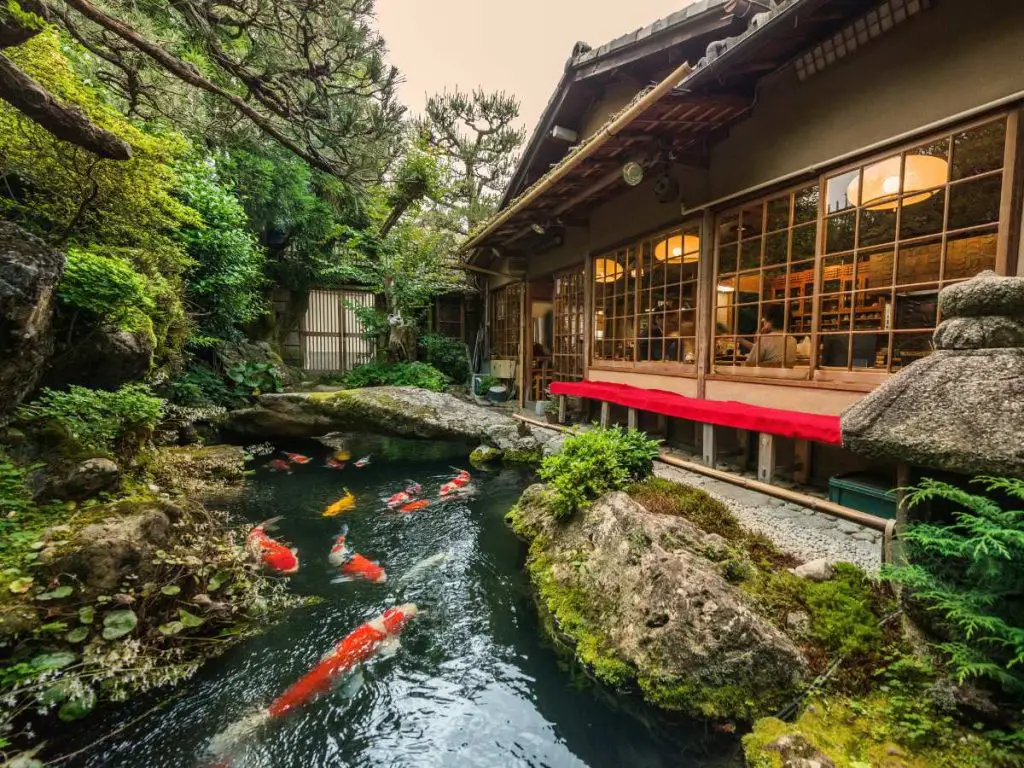
Setting up a Shusui Koi Pond
When it comes to setting up a pond for your beloved Shusui koi, there are a few key considerations to keep in mind. The design and construction of your pond play a vital role in creating a thriving habitat for these beautiful fish.
First, let’s talk about the ideal pond materials and dimensions. When it comes to materials, concrete and fiberglass are popular choices due to their durability and ability to retain water effectively. Consider the size of your pond as well, as Shusui koi require ample space to swim and grow. It’s recommended to have a minimum depth of at least 3 feet to ensure your koi have enough room to explore.
If you want to create a natural and visually appealing environment for your Shusui koi, incorporating plants and other natural elements is a great idea. Adding water lilies, lotus flowers, and floating plants not only provide shade and shelter, but they also enhance the aesthetic appeal of your pond. Plus, plants can help maintain the water quality by absorbing excess nutrients.
Now, let’s talk about water circulation and filtration. To ensure the health and well-being of your Shusui koi, investing in a reliable filtration system is crucial. Mechanical, biological, and chemical filtration methods are commonly used to keep the water clean and free from harmful substances. It’s important to regularly clean and maintain your filtration system to ensure optimal performance.
When it comes to coexisting with other fish species, it’s essential to consider compatibility and create an environment that promotes harmony. Some fish species may not get along well with Shusui koi or may compete for resources. It’s a good idea to research and consult with a knowledgeable expert to determine which fish species are best suited to coexist with Shusui koi in your pond.
Shusui Koi in Water Gardens
Creating a serene water garden with shusui koi can be a delightful and rewarding experience. These vibrant fish not only add beauty and movement to your garden, but they also provide a sense of tranquility and relaxation. Let’s explore some tips and ideas for incorporating shusui koi into your water garden.
Creating a Serene Water Garden with Shusui Koi
When designing your water garden, think about the overall ambiance you want to create. The presence of shusui koi can enhance the peaceful atmosphere. Consider adding elements like flowing waterfalls or gentle streams to create a soothing environment for the koi. These features not only provide a natural habitat for the fish but also create a visually appealing landscape.
Complementary Plants and Landscaping Ideas
Incorporating plants into your water garden can enhance the visual appeal and provide natural shade and cover for your shusui koi. Choose plants that are compatible with the water environment and won’t harm the fish. Water lilies, lotus, and water hyacinths are popular choices that can create a stunning backdrop for your shusui koi. Additionally, consider adding some rocks or driftwood to your garden to provide hiding spots and a more natural aesthetic.
Balancing Aesthetics and Fish Health
While designing your water garden, it’s important to strike a balance between aesthetics and the well-being of your shusui koi. Provide ample shade and shelter options for the fish to protect them from direct sunlight. This can be achieved through the strategic placement of plants, floating islands, or even specially designed koi shelters. Ensuring appropriate shade not only protects the fish from sunburn but also helps to maintain water temperature and quality.
Remember, a healthy and serene water garden is dependent on maintaining a proper balance of flora and fauna. Regular maintenance, including water quality testing, debris removal, and keeping plants in check, will ensure the longevity and well-being of your shusui koi and the overall health of your water garden.
Conclusion & Key Takeaways
So there you have it, a complete guide to shusui koi fish and everything you need to know about them. We’ve covered their physical characteristics, care requirements, breeding process, history, setting up a pond, and even incorporating them into water gardens. Now, let’s quickly summarize the main points:
- Shusui koi fish are a unique variety known for their vibrant color and striking scale patterns.
- They have a distinctive body shape, and their average lifespan and growth rate are comparable to other koi varieties.
- To keep shusui koi healthy, it’s important to provide them with an appropriate tank or pond setup, optimal feeding and nutrition, and regular maintenance.
- If you’re interested in breeding shusui koi, you’ll need to understand their breeding season, select suitable breeding pairs, and properly care for the eggs and fry.
- The history of shusui koi reveals its origin and influenced by other koi varieties, and its significance in Japanese culture and symbolism.
- When setting up a shusui koi pond, consider the design and construction, as well as the necessary water circulation and filtration system.
- In water gardens, shusui koi can create a serene atmosphere when accompanied by suitable plants and landscaping ideas.
With these key takeaways, you’re now equipped with the knowledge to start your own shusui koi journey. Remember to consult more resources for further information, as there’s always more to learn about these fascinating creatures. Whether you’re a pond enthusiast or simply interested in adding a touch of beauty to your outdoor space, shusui koi fish are sure to bring joy and tranquility to your life.
Related Questions
Can shusui koi be kept in a tank or do they require a pond?
Yes, shusui koi can be kept in either a tank or a pond. While ponds offer more space and a natural environment for them to thrive, tanks can still provide a suitable habitat for shusui koi as long as their needs are met, such as the appropriate tank size, water quality, and filtration system.
Can shusui koi live with other fish species?
Yes, shusui koi can coexist with other fish species (as well as other varieties of koi, like ghost koi) as long as compatibility and pond environment considerations are taken into account. It’s important to choose fish species that have similar temperature and water quality requirements. Additionally, providing adequate space, hiding spots, and a balanced diet for all fish species can help promote harmony in the pond.

